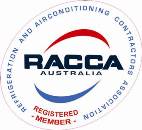Last week, RACCA Australia published two articles on changes to the industry this year–one on the HFC phasedown and the other on changes to the NSW cooling tower regulations.
This article is the final article focusing on said changes to the industry. This article will be focusing on:
Changes to the RAC licence scheme
Late last year, the Australian Refrigeration Council (ARC) published details to changes to the RAC licence scheme.
The ARC’s website stated that the changes were a result of the 2015-2016 review of the Ozone Protection and Synthetic Greenhouse Gas Management (OPSGGM) Program. The review was completed by the Department of Environment and Energy.
Their website also stated that the review identified a number of measures to be implemented, two of them related directly to the RAC licence scheme—three year refrigerant handling licences (RHL) and refrigerant trading authorisations (RTA), and updating the RHL and RTA re-application process.
From 1 January, the option of a three year RHL and RTA will be available, along with the standard permit durations. This option will only be available until 31 December as a transition period, before the default duration of all RHLs (with the exception of trainee RHL) and RTAs will be three years from 2019. The cost of the three year RHLs and RTAs will be the current annual fee applied over three years and the Trainee RHLs will default to one year in duration.
In regards to updating the RHL and RTA re-application process, from 1 January, the process for re-applying for an RHL or RTA will become a renewal rather than a re-application process. The renewal option is only available for RHL or RTA holders renewing 30 days or more prior to their licence expiring. The normal re-application process will apply for those re-applying within 30 days of expiry.
The ARC stated on their website that the industry will benefit from these changes as they will reduce administrative costs and the length of time it takes to apply for a licence or authorisation.
This isn’t the only licensing news for the industry, while separate to the RAC licence scheme, the ARC are building a new accreditation scheme in an effort to upskill the industry. The accreditation scheme will add guidelines for natural refrigerant training in Australia.
ARC CEO, Glenn Evans, provided an overview of the accreditation scheme at the ATMOsphere Australia 2017 Conference, stating that the scheme incorporates key refrigerants not covered by the existing RAC licence scheme.
ARC stated at the time that they were looking at having hydrocarbons, CO2, ammonia and class A2/A2L refrigerants be a part of the scheme, and that it has generated a large amount of interest from technicians.
The scheme will provide a two-year accreditation for applicants who can provide the required competencies associated with a relevant ARC RHL, as well as additional competencies associated with the specific refrigerant. For example to apply for a hydrocarbon accreditation, an applicant would need to have a full refrigeration and air conditioning licence and provide proof of completing units UEENEEJ174A, UEENEEJ175A and UEENEEJ176A. Successful applicants are then issued with an e-card and logo, and the free app is made available to them. The app contains a wholesaler directory and technical resources.
The ARC stated that the benefits for the industry include but are not limited to: the ability for technicians to prove they are qualified to work with natural low GWP refrigerants, providing clarity around course gaps and required course development, giving trainers more confidence to provide training in an uncertain market, and promoting safety for technicians, businesses and customers.
Another change to the RAC licence scheme, on a smaller and regular level, has been the increase in RHL and RTA fees. From 1 January, RHL and RTA fees increased by 2.006 percent.
More information on the changes to the RAC licence scheme can be found here.
Image via Pixabay.




